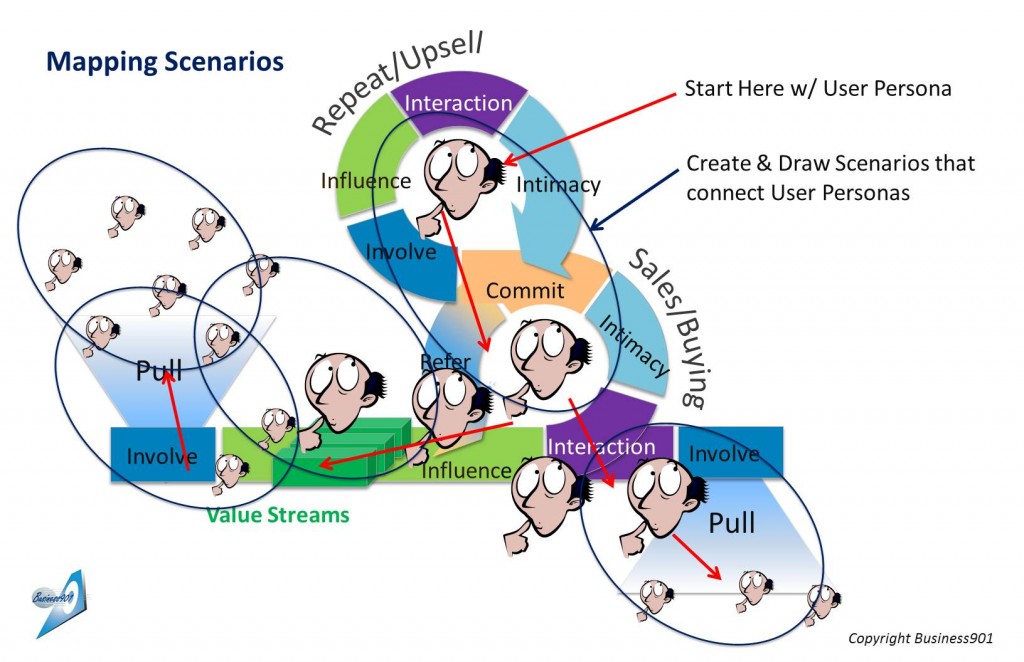I have moved away from the typical Customer Journey and Service Maps so popular in most Service Design and Design Thinking circles. I think in presentations a linear flow is much easy to understand and draw out in a workshop. It is pretty cool to create this Buyer Persona and then walk that Persona through the Customer Journey and depict what your company’s reaction will be going to be through the whole process. I am not saying it is wrong, just that it is limiting.
I still use personas in my work but have stopped calling them Buyer Personas (except for SEO purposes) and now concentrate on User Personas. If you think that I am drinking the Service Dominant Logic and Jobs to be Done Kool-Aid, I have. After developing several User Personas, we (my customers and their customers if willing) generalize them as we move away from our prime users and move them to the world of attraction (non-customers). What we start looking for is patterns in behaviors:
- Why is the difference between a user and non-user?
- What is the pattern of use?
- Why does someone use the product more than others?
- What is uncommon?
- What is common?
From these perspectives, we start building scenarios of what we think could happen? We take these scenarios and draw circles around the most likely User Personas. When viewing the scenario overlapping the user personas, real meaning starts taking place. You can see obvious misfits, and why certain scenarios will ever take place or needs some type of disruptive innovation to make it happen.
At this time, you are thinking is there any difference than just creating another line in a value stream. The difference is how you approach the training. In a value stream or a customer journey process, you decide on action steps or reactions to assist the customer. You train the staff to handle that task or several of the tasks. After the training and as you watch the process unfold, you wish that your staff displayed more initiative and handled customer problems more effectively.
In a Scenario Mapping process, you train people to understand and recognize the scenarios that are playing out. This allows front line staff the ability to have a bigger picture and react accordingly. Instead of making local decisions and just carrying out their duties, the staff can handle different scenarios, different dilemmas and complex problems are simplified. It is the training through the use of scenarios that allow for this. What is? What if? What Wows? What Works? – can become a part of your company’s culture.
For many, it is risky business. However, it allows you a better opportunity to co-create value with your customer. It allows utilizing the CAP-Do process of learning from the future as it emerges. The organization that instills the CAP-Do process will put a tremendous amount of faith in their staff. The staff must work and overcome the tension between the organization and the customer.
CAP-Do is a Lean process that supports the tenants of Service Dominant Logic and Jobs to be done. It requires a fundamental understanding of the idea that there is not one single answer in this world for any problem. The answers lie with the people that are addressing the problem at the moment and have a particular job-to-get-done. It is in understanding their needs and their outcomes with greater wisdom. More fundamentally, you create a way to get your own job done in any situation, in any scenario.
P.S. It is a lot of fun trying these scenarios out. They lend themselves to role-playing. The simplest way to get started is draw your own user persona and have others in your organization that influence the way you do work, draw their own. Create a few scenarios on how your day plays out and see how others fit in. It should be a very easy process, more on this later.


Comments are closed.